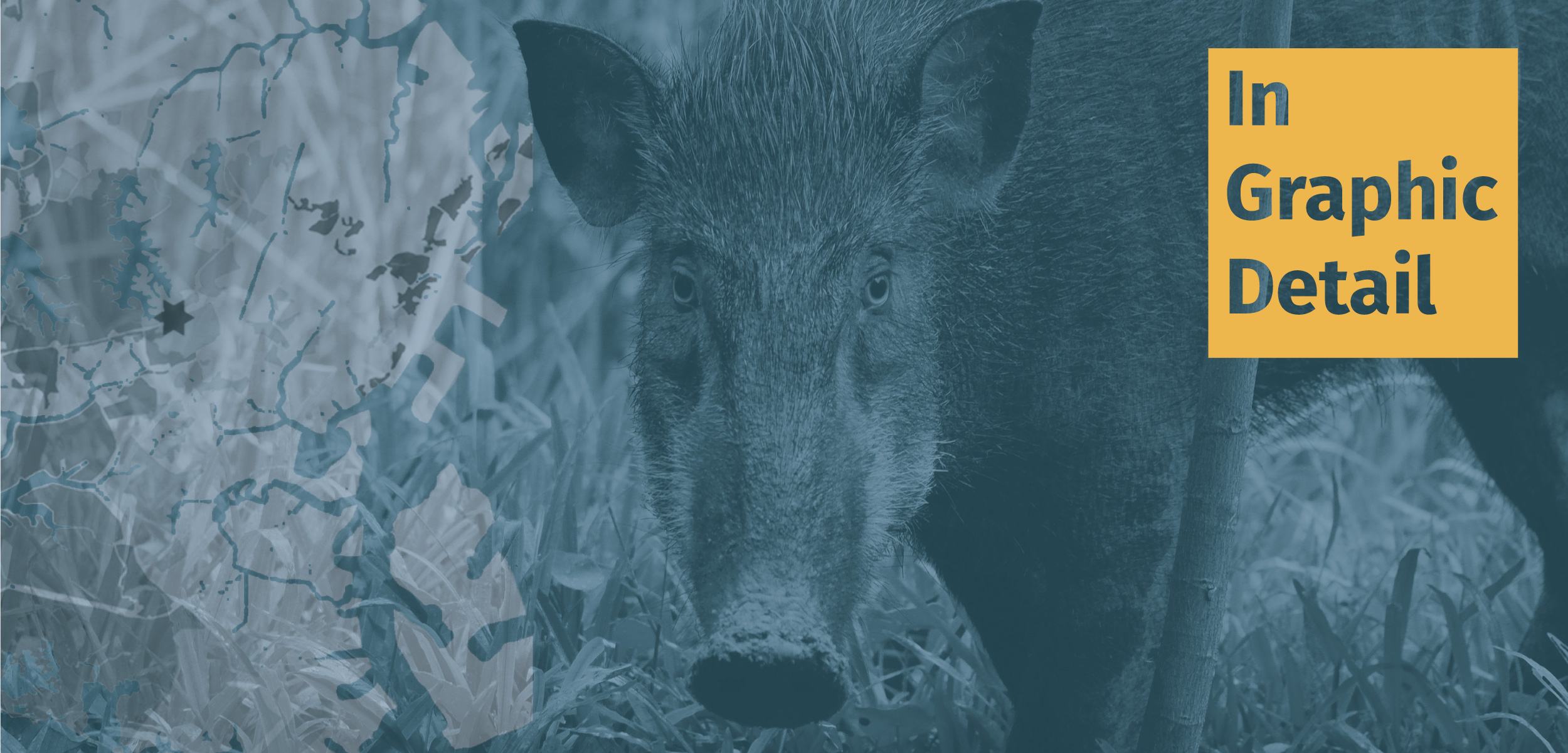In Graphic Detail: Pigs in the City
Wild pigs can swim in search of new territory—and they found it in one of the world’s most populated islands.
Article body copy
Wild pigs roam the globe. Originally from Eurasia and North Africa, they’re now one of the most invasive species worldwide, trotting from the pine forests of North America to the wetlands of Oceania. Despite their world domination, we know little about how they’re taking over or the impact they have on ecosystems.
A multi-institution collaborative study conducted by researchers from Singapore, Australia, and the United States tracked the movement of wild pigs in Singapore, in particular the speed and geographical distribution of their dispersal. Integrating interviews with local wildlife researchers and park employees with camera trap data collected across the country’s fragmented green areas, researchers made a surprising discovery: the pigs were entering the country via sea and quickly recolonizing the green spaces across the island nation.
Hunting and urbanization wiped wild pigs from mainland Singapore almost four decades ago. But since the 1990s, the pigs have staged a remarkable comeback by swimming across the one-kilometer Johore Strait from Peninsular Malaysia and the offshore islands of Pulau Tekong and Pulau Ubin. Since their resurgence, the porkers have steadily journeyed southward along the edges of regenerated forests, eating human crops and garbage while sheltering in natural vegetation.
In 2017, researchers estimated that there were more than 40 wild pigs living in MacRitchie, a 10.2-square-kilometer area of forested land in the center of Singapore nearly 15 kilometers from the Malaysian border. These hogs spread from one green space to the next, and the recolonization pathway predicts that pig populations will soon extend to the southern tip of Singapore.
Native to Singapore’s ecosystems, wild pigs once coexisted with natural predators such as tigers and leopards, which helped regulate their population. The current landscape, however, bears little resemblance to the forest the pigs called home decades ago. Researchers now worry that the reintroduction of these animals may harm the local ecosystem.
A hyperabundance of wild pigs may cause cascading ecological consequences including erosion, overgrazing, and vegetation damage. “The ability of wild pigs to disperse across a cityscape exceeded our predictions,” the authors say. They recommend keeping a close eye on their numbers and using active population control to keep the porkers in check.


